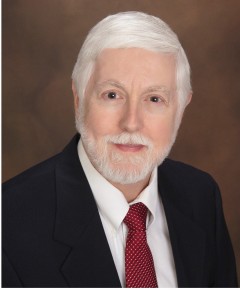We at DRGO spend a whole lot of time exploring gun issues every day. That includes research (such as it is), politics, advocacy, policy, and the occasional hobbyist item (because we are, after all, gun enthusiasts). And in everything, there is bias.
There is bias in what we publish and talk about, too. We think guns are cool. They are rather simple but finely engineered little machines that nearly always perform their intended function. They are often heirloom material, in some cases demonstrating the highest craftsmanship. They can also be deadly, so you have to be careful.
We also believe that the Second Amendment codifies the exercise of as important a natural individual right in our lives as family, faith and freedom. And that it is exceedingly important for the preservation of those.
So when we report on firearm-related research, news and legislation, you know where we’re coming from. We back up our positions with careful analysis that stands on its own, regardless of our interests. We aren’t journalists, but we are fact-checkers.
Why is it so rare to learn about other reporters’ personal feelings about their subjects—in our case, guns?
The Trace sends out a daily email claiming to cover the most important gun related news. They do cover what’s going on, but despite its claim to “independent, non-partisan, non-profit journalism” it is all about “America’s gun violence crisis”. But the basic question of “What crisis?” is never answered, at least to our satisfaction. There is a reason that Lewis Carroll’s poem in which the Walrus says “The time has come . . . to talk of many things” is also called Jabberwocky.
Yesterday The Trace’s deputy editor, Ben Hallman, who seems to prepare the email updates, said something noteworthy. “. . . [W]e in the media are insufficiently skeptical of information that confirms opinions we hold about certain groups of people.” No kidding, Ben.
He was referring to a single Facebook post sardonically saying “Shoot at Hurricane Irma” during its passage. There have been over 1,700 replies to it so far, with 56,000+ interested. It became a viral news story all over the media, who reported it as if there was an enormous movement of morons shooting into the sky, where it lands we do not know or care. Hallman did even worse: “I tweeted about the hurricane shooting party without bothering to go to the source, the Facebook page itself.” Not just you, Ben, but congratulations on your moment of self-revelation.
And yet. . . The rest of Wednesday’s The Trace update referenced John Lott’s testimony to the Presidential Advisory Commission on Election Integrity, the House Natural Resources Subcommittee on Lands hearing on the Sportsmen’s Heritage & Recreational Enhancement (SHARE) bill, the shooting deaths of 8 people by an enraged ex-husband in Texas, and shooting at Irma.
The paragraphs about Lott’s testimony only referenced criticisms of Lott’s previous, unrelated work and didn’t even touch on the point—that voting and gun owning rights deserve equal respect. Discussion of the SHARE Act testimony wasted the lead on a claim about the June shootings of congressional baseball players (that was contradicted by one present), and took one item of many out of Stephen Halbrook’s testimony balanced by nothing but a “retort”. Regarding the Plano massacre, The Trace unironically reports that one victim “knew martial arts, but [was] defenseless against a gun.” Sigh.
At least they could have reported the full extent of Halbrook’s testimony, which covered Interstate Transport of Firearms, Hearing Protection for Gun Owners, and Lawful Purpose Instead of “Sporting Purpose” (for defining legal firearms and ammunition). His prepared testimony runs 7 pages and there was more questioning (which he feels went well).
The Trace, like the Anti-Defamation League, tried to undercut his appearance by charging that his historical research into Nazi gun confiscation from those they went on to murder falsely equates Nazism with gun control and should discredit his other unrelated areas of expertise. Jews for the Preservation of Firearms Ownership take a different view. It’s too true that Nazi selective Gun Control in the Third Reich made it easier to pursue their “Final Solution”.
If you want more, just look at Tom Knighton in Bearing Arms on Wednesday, The Trace’s Data Undermines Their Own Assertions On Gun Accidents. His extremely generous estimate that .006% of carried guns may be involved in accidental shootings each year. Or, using the latest estimates, you can say that .00008% of gun owners are involved. Or that .000003% of all guns in America are involved.
However you cut it, the question asks itself: “What is that crisis, again?” Every untimely death, whether accidental or intentional, by gunshot or beating or drowning or medical error, is a tragedy. The public health questions have to be: What are the biggest problems? What are the soluble problems? And, what can we do about them?
The opposite of interest and enjoyment of firearms is hoplophobia. We’re comfortable looking at them as material objects that are what they are and do what they do. Others are informed by fear of their magical, death-dealing properties.
Who’s more likely to understand reality?

— DRGO Editor Robert B. Young, MD is a psychiatrist practicing in Pittsford, NY, an associate clinical professor at the University of Rochester School of Medicine, and a Distinguished Life Fellow of the American Psychiatric Association.

